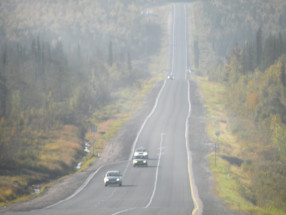Northern arrival

The AHO Future North team has met up locally in Kirkenes with our partners at the Barents Institute. This is our first joint visit to the Circumpolar North. Our project team has gathered together a diverse set of interests and competencies: landscape theory, architecture, interaction design, ethnography, political science, and narrative.
We are journeying here to explore and observe change in the most inhabited part of the sub-arctic region: the Kola peninsula in the North-Western part of Russia. It forms part of the Barents coast, stretching from Norway to Russia, and is likely to be one of the major areas of ongoing transformation.
This is the first of a set of travels in which different logics of landscapes are mapped from the ground. Ours is a collaborative experience of reading, interpreting the configuration of material in a given area. It involves meshing and overlaying the researchers’ perspectives.
We will travel between changing towns and cities, along the few main roads that connect them into a industrial system. Here we find constructed landscapes that contrast with the surrounding tundra and northern forests, in a region that more than most demonstrates the terra-forming of the Anthropocene. Clearly, the Kola region still performs an active relation to the crust of the earth. There is something both elemental and cultural here, entwined in landscape.
In looking into and towards a future north, we take up largely cultural perspectives. We employ these as alternates to other main mappings of the sea and land. We are motivated to study the cultural and specific local conditions that prefigure future change. Kola is home to the biggest city in the arctic, and it is home to the largest number of people in the whole circumpolar region.



